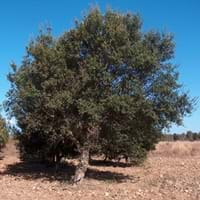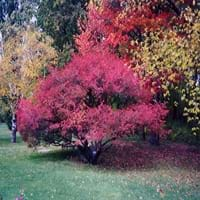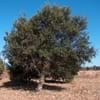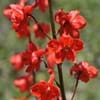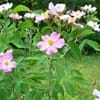Life Span
Perennial
Perennial
Origin
China
Europe, Western Asia
Types
Not Available
Euonymus fortunei, Euonymus alatus, Euonymus europaeus
Habitat
Hills, Lower slopes, open Woodlands
Dappled Shade, Shady Edge, Sunny Edge, Woodland Garden
USDA Hardiness Zone
4-8
4-7
Sunset Zone
A3, 1a, 1b, 2a, 2b, 3a, 3b, 4, 5, 6, 7, 8, 9, 14, 15, 16, 17, 18, 19, 20, 21
1a, 1b, 2a, 2b, 3a, 3b, 4, 5, 6, 7, 8, 9, 14, 15, 16
Habit
Upright/Erect
Upright/Erect
Flower Color
Light Green
Yellow green
Flower Color Modifier
Not Available
Not Available
Fruit Color
Brown, Light Green, Lime Green
Pink, Purple, Red
Leaf Color in Spring
Green, Light Green
Green
Leaf Color in Summer
Green, Light Green
Green
Leaf Color in Fall
Red
Red
Leaf Color in Winter
Not Available
Not Available
Leaf Shape
Lobed
Lanceolate to elliptical
Plant Season
Spring, Summer, Fall, Winter
Fall
Sunlight
Full Sun, Partial Sun, Partial shade
Full Sun, Partial Sun, Partial shade
Type of Soil
Clay, Loam, Sand
Clay, Loam, Sand
The pH of Soil
Acidic, Neutral, Alkaline
Acidic, Neutral, Alkaline
Soil Drainage
Well drained
Well drained
Bloom Time
Late Spring, Early Summer
Late Spring
Tolerances
Drought, Salt
Drought
Where to Plant?
Ground, Pot
Ground, Pot
How to Plant?
Seedlings
Cuttings, Seedlings
Plant Maintenance
Low
Medium
Watering Requirements
Average Water Needs, Requires regular watering, Requires watering in the growing season
Average Water Needs, Do Not over Water
In Summer
Lots of watering
Lots of watering
In Spring
Moderate
Moderate
In Winter
Average Water
Average Water
Soil pH
Acidic, Neutral, Alkaline
Acidic, Neutral, Alkaline
Soil Type
Clay, Loam, Sand
Clay, Loam, Sand
Soil Drainage Capacity
Well drained
Well drained
Sun Exposure
Full Sun, Partial Sun, Partial shade
Full Sun, Partial Sun, Partial shade
Pruning
Not Available
Remove damaged leaves, Remove dead branches, Remove dead leaves
Fertilizers
No fertilizers needed
organic fertlizers
Pests and Diseases
Red blotch, Spider mites
Powdery mildew, Vine weevils
Plant Tolerance
Drought, Salt
Drought
Flowers
Insignificant
Insignificant
Flower Petal Number
Single
Single
Foliage Texture
Medium
Medium
Foliage Sheen
Matte
Glossy
Allergy
Asthma
Mild Allergen
Aesthetic Uses
Landscape Designing
Showy Purposes
Beauty Benefits
Not Available
Not Available
Environmental Uses
Air purification, Forms dense stands, Nesting sites for birds, No fertilizer, pesticides, or herbicides needed, Prevent Soil Erosion, Shadow Tree, Windbreak
Air purification
Medicinal Uses
Not Available
Alterative, Laxative, Purgative, Tonic
Part of Plant Used
Bark, Stem
Bark, Seeds, Wood
Other Uses
Used as firewood, Used for woodware, Used in biomass, Used in construction, Used in Furniture, Wood is used for ship building, Wood is used in construction, Wood log is used in making fences
Edible yellow dye is obtained, Used as essential oil, Yields a volatile oil that is used in soap making
Used As Indoor Plant
No
Yes
Used As Outdoor Plant
Yes
Yes
Garden Design
Cutflower, Feature Plant, Foundation, Hedges, Mixed Border, Screening, Wind Break
Hedges, Screening, Wind Break
Botanical Name
EUONYMUS phellomanus
EUONYMUS europaeus 'Aldenhamensis'
Common Name
Cork Oak
Spindle Tree, Common Spindle, European Spindle
In Hindi
कॉर्क ट्री
Spindle Tree
In German
Cork Tree
Spindelbaum
In French
Arbre de Cork
Spindle Arbre
In Spanish
Árbol de corcho
Árbol del husillo
In Greek
Cork Tree
ατράκτου Δέντρο
In Portuguese
Cork Tree
Árvore spindle
In Polish
Cork Tree
Wrzeciono Drzewo
In Latin
Cork ligno
Ligno colos
Phylum
Anthophyta
Magnoliophyta
Class
Dicotyledonae
Magnoliopsida
Order
Fagales
Celastrales
Family
Celastraceae
Celastraceae
Clade
Angiosperms, Eudicots, Rosids
Angiosperms, Eudicots, Rosids
Subfamily
Mirinae
Celastroideae
Number of Species
Not Available
Not Available
Season and Care of Cork Tree and Spindle Tree
Season and care of Cork Tree and Spindle Tree is important to know. While considering everything about Cork Tree and Spindle Tree Care, growing season is an essential factor. Cork Tree season is Spring, Summer, Fall and Winter and Spindle Tree season is Spring, Summer, Fall and Winter. The type of soil for Cork Tree is Clay, Loam, Sand and for Spindle Tree is Clay, Loam, Sand while the PH of soil for Cork Tree is Acidic, Neutral, Alkaline and for Spindle Tree is Acidic, Neutral, Alkaline.
Cork Tree and Spindle Tree Physical Information
Cork Tree and Spindle Tree physical information is very important for comparison. Cork Tree height is 240.00 cm and width 180.00 cm whereas Spindle Tree height is 370.00 cm and width 900.00 cm. The color specification of Cork Tree and Spindle Tree are as follows:
Cork Tree flower color: Light Green
Cork Tree leaf color: Green and Light Green
Spindle Tree flower color: Yellow green
- Spindle Tree leaf color: Green
Care of Cork Tree and Spindle Tree
Care of Cork Tree and Spindle Tree include pruning, fertilizers, watering etc. Cork Tree pruning is done Not Available and Spindle Tree pruning is done Remove damaged leaves, Remove dead branches and Remove dead leaves. In summer Cork Tree needs Lots of watering and in winter, it needs Average Water. Whereas, in summer Spindle Tree needs Lots of watering and in winter, it needs Average Water.
